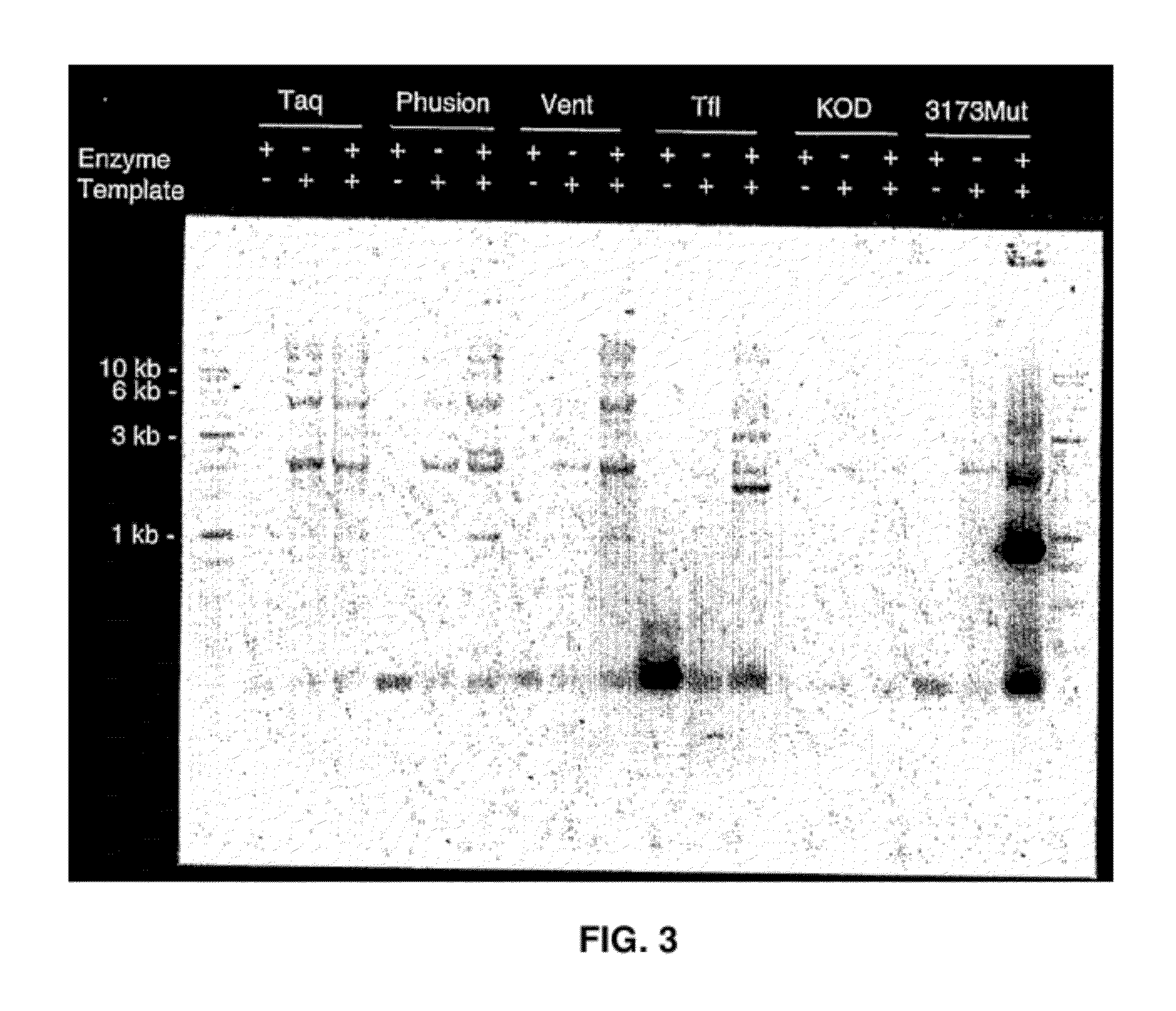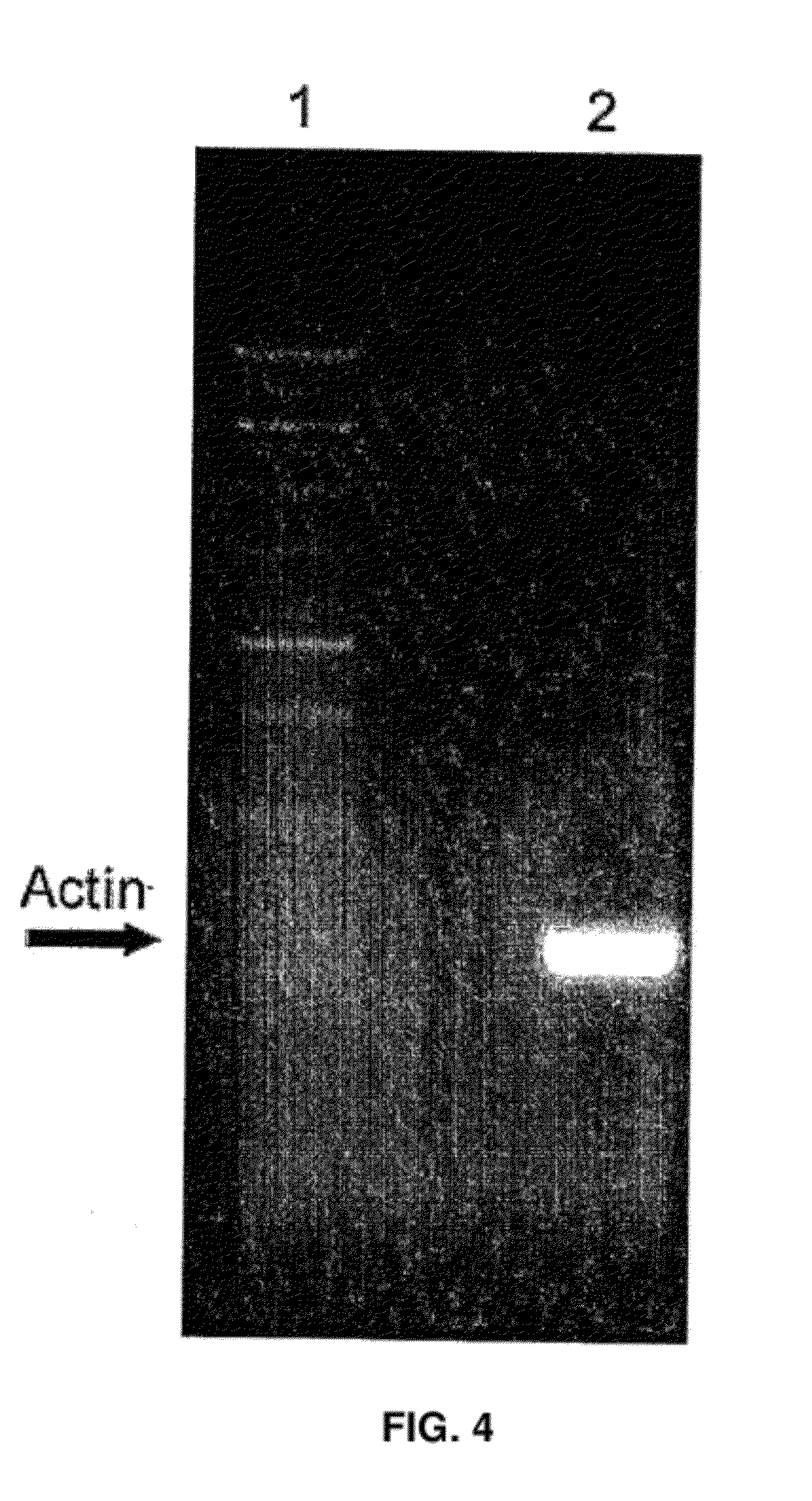Thermostable DNA polymerases and methods of use
a technology of dna polymerases and dna, which is applied in the field of thermostatic dna polymerases, can solve the problems of lack of proofreading activity, low amplification specificity, and high error rate of each enzyme, so as to improve the amplification specificity of isothermal methods, improve the stability of the polymerases, and increase the range of conditions
- Summary
- Abstract
- Description
- Claims
- Application Information
AI Technical Summary
Benefits of technology
Problems solved by technology
Method used
Image
Examples
example 1
Isolation of Uncultured Viral Particles from a Thermal Spring
[0085]Viral particles were isolated from a thermal spring in the White Creek Group of the Lower Geyser Basin of Yellowstone National Park (N 44.53416, W 110.79812; temperature 80° C., pH 8), commonly known as Octopus Spring. Thermal water was filtered using a 100 kiloDalton molecular weight cut-off (mwco) tangential flow filter (A / G Technology, Amersham Biosciences) at the rate of 7 liters per minute for over 90 minutes (630 liters overall), and viruses and microbes were concentrated to 2 liters. The resulting concentrate was filtered through a 0.2 μm tangential flow filter to remove microbial cells. The viral fraction was further concentrated to 100 ml using a 100 kD tangential flow filter. Of the 100 ml viral concentrate, 40 ml was processed further. Viruses were further concentrated to 400 μl and transferred to SM buffer (0.1 M NaCl, 8 mM MgSO4, 50 mM Tris HCl 7.5) by filtration in a 30 kD mwco spin filter (Centricon, M...
example 2
Isolation of Viral DNA
[0086]Serratia marcescens endonuclease (Sigma, 10 U) was added to the viral preparation described in Example 1 to remove non-encapsidated (non-viral) DNA. The reaction was incubated for 30 min. at 23° C. Subsequently, EDTA (20 mM) and sodium dodecyl sulfate (SDS) (0.5%) was added. To isolate viral DNA, Proteinase K (100 U) was added and the reaction was incubated for 3 hours at 56° C. Sodium chloride (0.7M) and cetyltrimethylammonium bromide (CTAB) (1%) were added. The DNA was extracted once with chloroform, once with phenol, once with a phenol:chloroform (1:1) mixture and again with chloroform. The DNA was precipitated with 1 ml of ethanol and washed with 70% ethanol. The yield of DNA was 20 nanograms.
example 3
Construction of a Viral DNA Library
[0087]Ten nanograms of viral DNA isolated as described in Example 2 was physically sheared to between 2 and 4 kilobases (kb) using a HydroShear Device (Gene Machines). These fragments were ligated to double-stranded linkers having the nucleotide sequences shown in SEQ ID NOS:21 and 22 using standard methods. The ligation mix was separated by agarose gel electrophoresis and fragments in the size range of 2-4 kb were isolated. These fragments were amplified by standard PCR methods. The amplification products were inserted into the cloning site of perSMART vector (Lucigen, Middleton, Wis.) and used to transform E. CLONI 10 G cells (Lucigen, Middleton, Wis.).
PUM
| Property | Measurement | Unit |
|---|---|---|
| temperatures | aaaaa | aaaaa |
| temperatures | aaaaa | aaaaa |
| temperatures | aaaaa | aaaaa |
Abstract
Description
Claims
Application Information
 Login to View More
Login to View More - R&D
- Intellectual Property
- Life Sciences
- Materials
- Tech Scout
- Unparalleled Data Quality
- Higher Quality Content
- 60% Fewer Hallucinations
Browse by: Latest US Patents, China's latest patents, Technical Efficacy Thesaurus, Application Domain, Technology Topic, Popular Technical Reports.
© 2025 PatSnap. All rights reserved.Legal|Privacy policy|Modern Slavery Act Transparency Statement|Sitemap|About US| Contact US: help@patsnap.com



